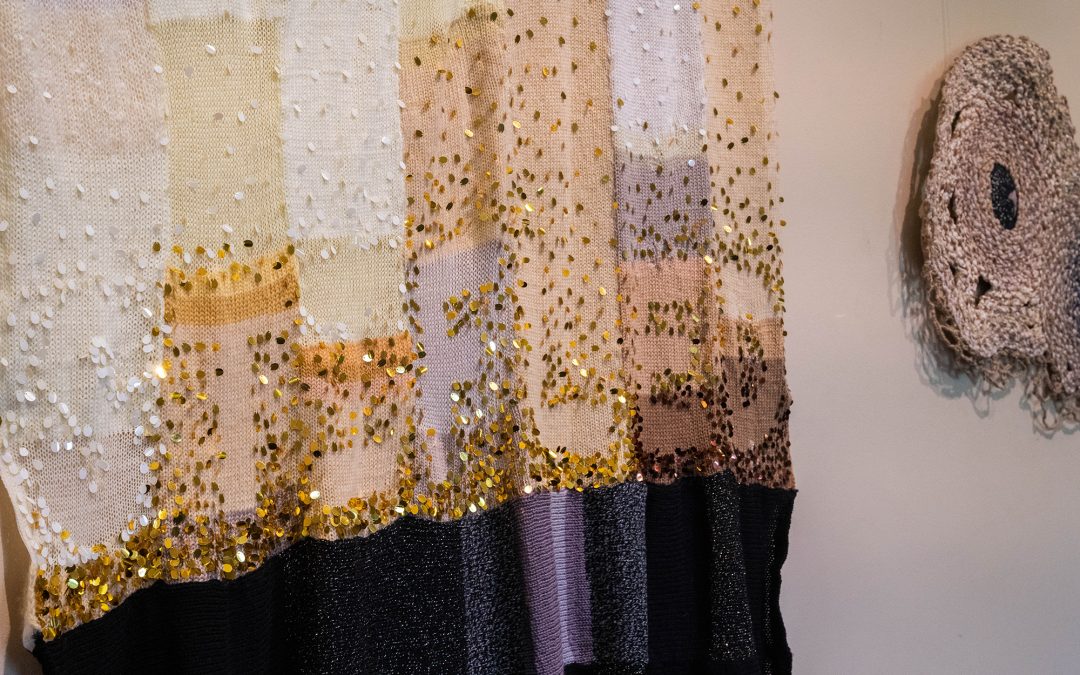Life lines, installation view, featuring the work of Sera Waters. Photograph Lana Adams.
Reflection: Looking back on a trilogy
By Erin O’Donohue, ART WORKS Early Career Curator 2022
In the role as Early Career Curator as part of the Guildhouse and City of Adelaide ART WORKS program I curated a trilogy of exhibitions, Memory Bank, Life lines and Introspection. These exhibitions were the product of my need to explore ideas relating to how we experience feelings and by extension how differently people experience said feelings. Overall, a mission to investigate the different ways individuals make sense of and react to emotions. The Early Career Curatorship was a new premise to me, and came with the opportunity to navigate new experiences and challenges. Likewise, it allowed me to develop my own personality and voice when curating. Boosting my confidence in showing creativity, finding fun in selecting works and installing.
This shows in the development of the trilogy. Each exhibition becoming more cohesive and playful as they are presented. Stitched into the seams of Memory Bank, Life lines, and Introspection are my considerations of these common themes and perspectives. The curatorship gave me opportunity to develop and express these conversational and curatorial skills alongside an engaging investigation of ideas through many works from South Australian based artists.
There was always the expectation of three exhibitions being produced as part of my position with Guildhouse. However, it was my approach of generating the thematics ahead of time that ultimately developed them into a trilogy. At the core of the trilogy is people. Humanity and their individual experiences, beliefs and reactions, communicated through created artifacts. What causes feelings and particularly how we feel has always been of interest to me – resurfacing throughout our lives prompted through objects, events and scents.
Another point to this is how we feel. How we bolster our feelings and our method of communicating them tells us just as much about a person as the feelings themselves. Providing an insight into personality and interests. Personally, fashion and food are my forms of expression. I dress how I feel, bake when feeling nostalgic and cook when I’m stressed. But the reverse is also true. I bake to feel happy or dress a certain way to boost my mood or feel confident. And for some, their way of communication is through visual art. There are layers here and this is a major aspect of exploration in these exhibitions. The expression.
I’ve found accurately expressing myself to be quite difficult at times. Even when I think I’m being clear and precise, what I say and how others perceive me are often different. Being a frustrating point of interest to me, I like to explore how others communicate themselves and what modes they use to express themselves.
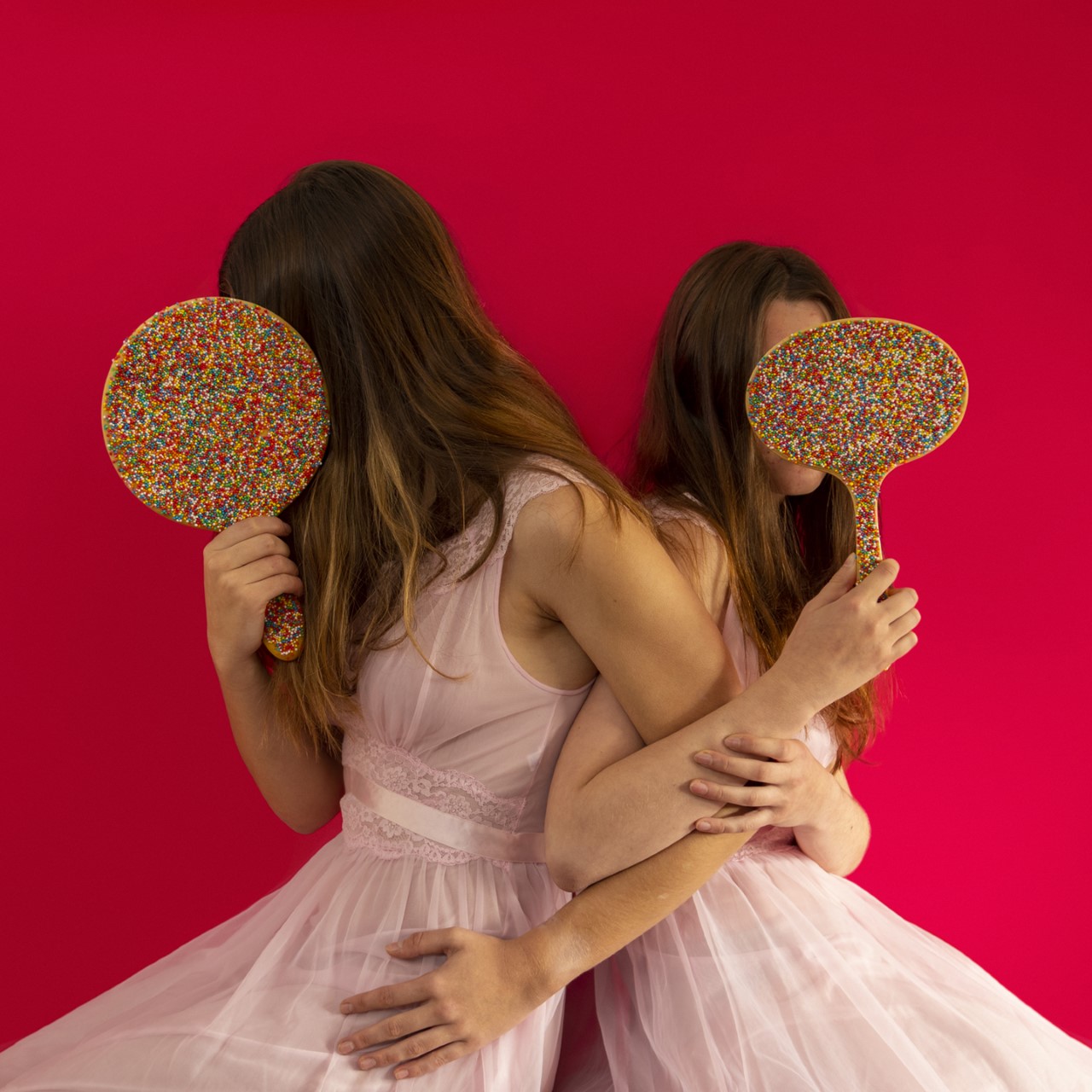
Deborah Paauwe, The Adorned Mirrors (hands locked). Image courtesy the artist.
There are many ways to approach curating. Some exhibitions are inspired by works of the artists or in collaboration with others in the industry. This trilogy took the approach of starting with a theme and then selecting artworks and approaching artists. By first choosing the theme and selecting artists second, I put myself in the position of researching and actively searching for artists. A springboard method which naturally led me to discovering emerging artists and exposing myself to different artists within SA that I hadn’t yet met.
Showing a variety of different voices in the exhibition was important to me as by the very nature of identity – we are all different. And sharing a scope, even narrow, was imperative to successfully investigating such a diverse topic. Consequently, the tactic of searching for artists after the theme helped me to achieve a visually cohesive body with a diverse collective of artists. Providing voices from artists in different stages of their careers, different genders and with different life experiences.
As all the shows took place in Adelaide Town Hall I wanted them, although related, to have their own personalities and visual identities. All exhibited within the span of a year, I worried that displaying works in the same venue that touched on similar topics and visually similar would become stale and repetitive. To remedy this, I made sure to diversify the works not only visually, but with the overlying subjects. Looking to the City of Adelaide’s strategic plan for inspiration.
Reflecting on these revelations, I recognized that I wanted to focus on notions of feelings and identity. While ‘feeling’ is a niche starting topic, I pinpointed that its core falls under ‘identity’. Doing this allowed me to recognise that I could use this as a stable starting point, as the umbrella of identity is a large one. And if properly positioned, I would be able to look into other topics as well as investigate the original idea of feeling. Which, would provide some ‘flavour’ to the exhibitions. On reflection, I broke down the exhibitions into factors which influence our feelings; external such as experiences, internal such as self-reflection and response to the world at large.
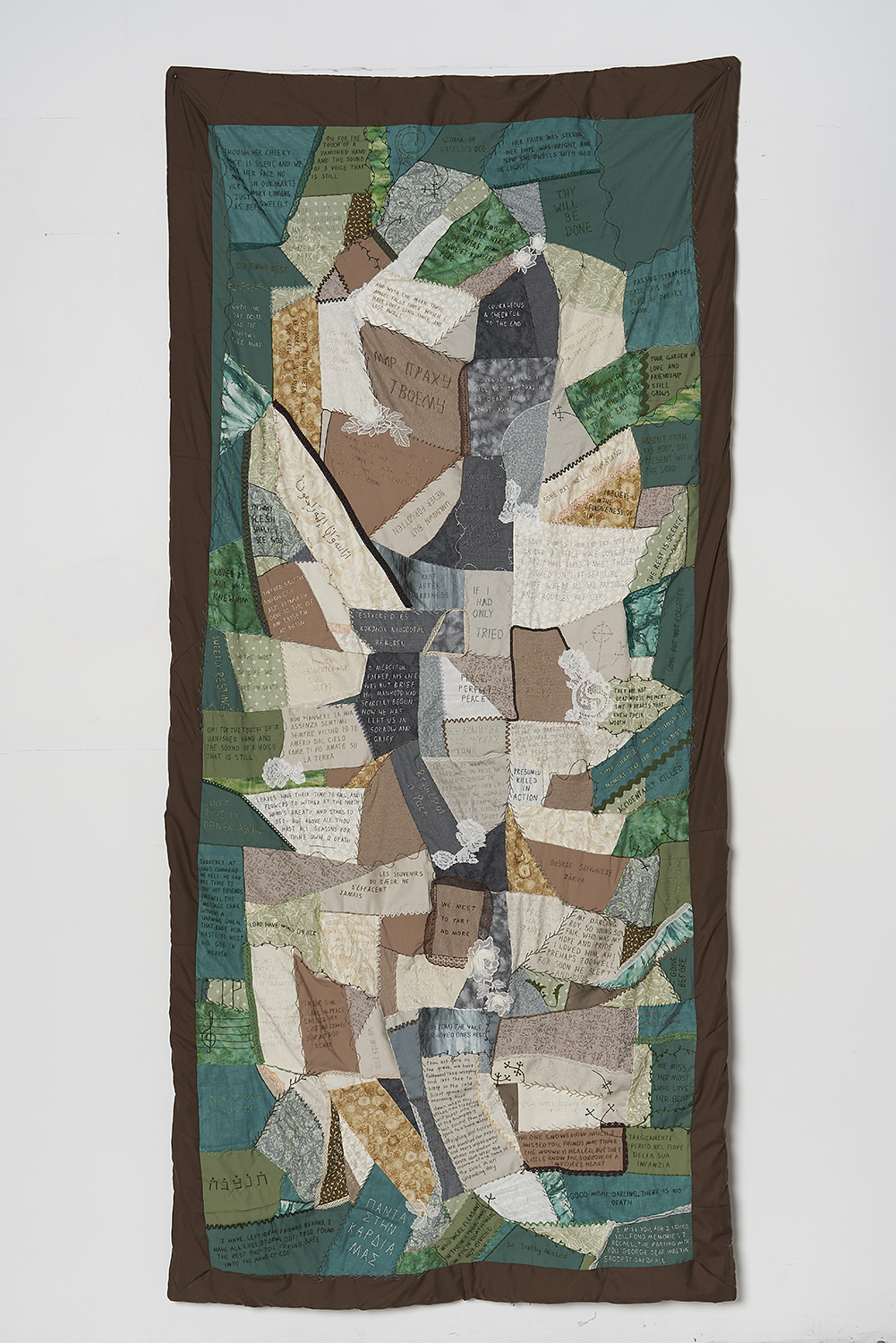
Caitlin Bowe, time changes many things but memory like the ivy clings (West Terrace Cemetery). Image courtesy the artist.
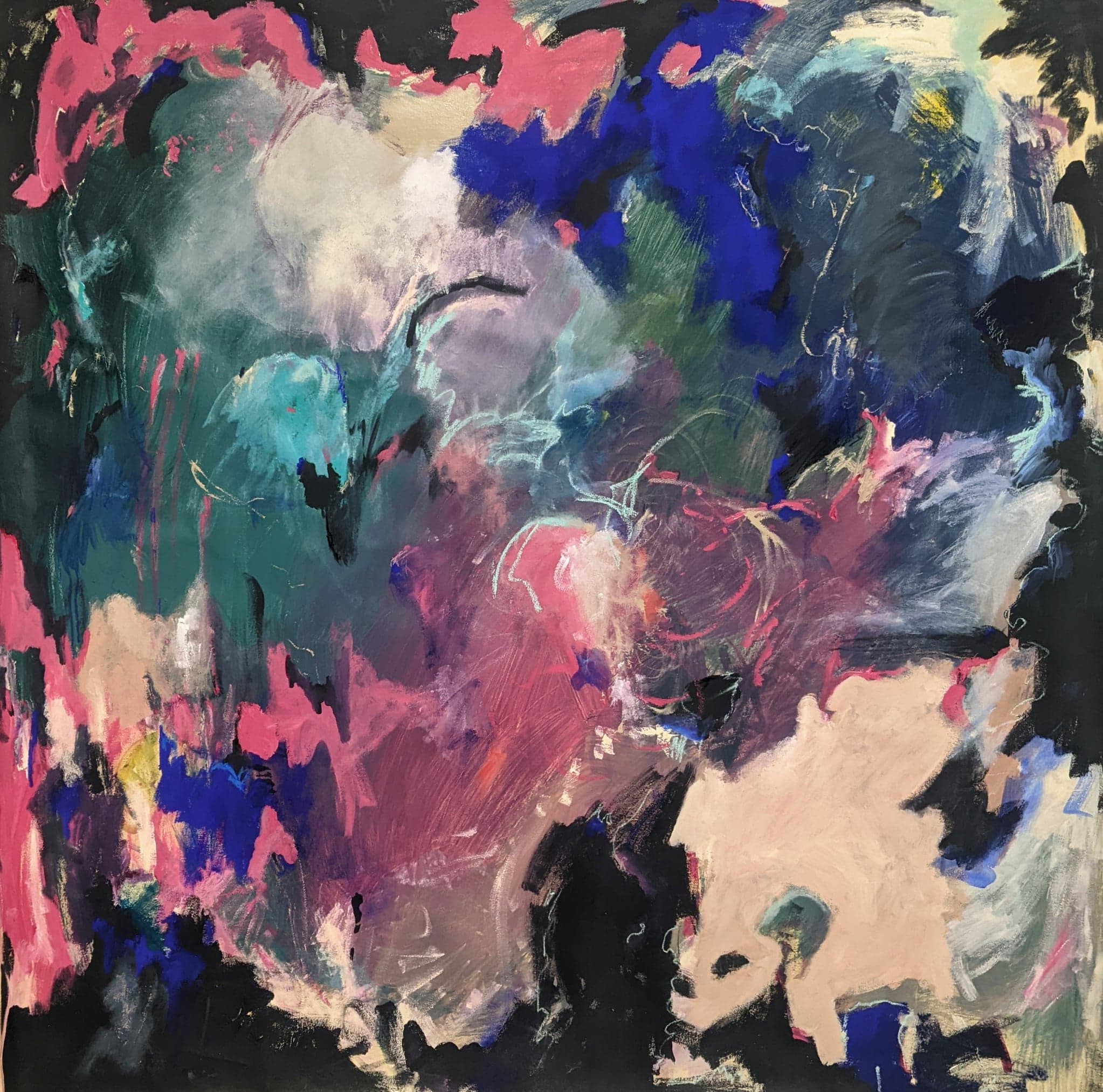
Annelise Forster, Will We Talk. Image courtesy the artist.
Considering the location of the exhibitions – the themes and my approach needed to align with the City of Adelaide’s guiding principles and priorities. Of which is a focus on communities, bolstering economic growth, culture and environmental leadership. Having already identified the main focus for the exhibitions, gaining inspiration from these principals became a useful tool in tailoring the supplementary theming. From this point onwards, creating the bases for the thematics was almost solidified. Being finetuned upon the discovery of trends and influences from artists. Landing on ‘memory and moments’, ‘the environments we live in’ and the ‘objective-self’ as starting points. Eventually becoming Memory Bank, Life lines and Introspection.
Memory Bank is a look into the difference between moments and memories. There are many facets’ people use to differentiate the two, but they have much in common. Exhibiting works from Sonya Rankine, Caitlin Bowe, Anneliese Forster, Alex Frayne, Aunty Ellen Trevorrow, Kate Kurucz and Jingwei Bu the artworks in this exhibition sampled different takes on memory and moments. Shown in both the concepts behind the pieces and the production of the works themselves. For example, ‘Time changes many things but memory like the ivy clings’ by Caitlin Bowe is a large, embroidered work. Using recycled fabrics and thread to piece together epitaphs from the West Terrace Cemetery. Each hand embroidered epitaph is, as explained by Bowe in her artist statement, “a glimpse into the memory left by another”. Compiling the words that the families and friends chose to immortalise their loved ones by this piece looks at “grief as an expression of love”. Tenderly sharing the memories of people passed and an expression of echoed memory.
In comparison the works exhibited by Annelise Forster are spontaneous. Abstract works which are the visual representation of feelings brought on by music played during its conception. Using their body to apply the paint to canvas, the work itself becomes the embodiment of the feeling and the artifact of a moment. Both works are complimentary to the rhetoric, yet provide different examples of memory and moments.
Conceiving the layout for Memory Bank I wanted the hang to demonstrate the different way people approach experiences and recollection. The way I interpreted the works selected for the exhibition, they could be divided into two different energies, warm and energetic. All the works are visually linked by colour, but depending on how they are grouped I found provided a different feeling. Dividing the room by said feelings, warm works were displayed on the walls to the left and energetic works on the walls to the right. My intention behind this being that when the Adelaide Town Hall is looked on as a whole from either end of the Main Foyer there is cohesion and can be read as one. But when one side of the hall is looked on individually the audience can distinct it from the other side of the room.
Although this did not quite turn out the way I intended, I am happy I decided to experiment at this point in my position. It made me more confident to try new things in the coming exhibitions. And spurred me to aim for seam-lined visual coherence in the second exhibition. The premiss itself perfectly incapsulated what I set out to explore in these exhibitions. Providing varying examples of expression on a universal experience with differing outcomes and subjects.
Life lines was conceived from the initial idea of citing the similarities between the natural and manmade world. However, after some minor research and looking into artists work this shifted into a broader idea of how we interact with nature and interact with the spaces we live in. The topic of environmental issues is an important one, commonly highlighted by artists and curators. It’s something I wanted to touch on, but having consumed a lot of the content myself I wanted to look at it from a different angle. A softer touch that still allows the serious messages space to resonate whilst also looking into the therapeutic nature of our environment.
Noticing a trend in artists referencing mysticism and folk law in their works online, I wanted to somehow incorporate this in the exhibition. This somewhat influenced the change in the direction of the thematic. But primarily, this presented itself through the overall aesthetic of Life lines. Monotoned with pops of shimmer and golden tones giving the space a dark dreamlike quality. Over all, this was a strong visual concept and found this to be the most unified exhibition of the three.
This exhibition included works from artists Anna Révész, Sera Waters, Jonathan Kim, Loren Orsillo, Asha Southcombe, Kay Lawrence, Cedric Varcoe and Janette Gay sharing a variety of different perspectives on the idea of interreacting with nature and our environments. Spanning from colonial impact on northwest Australia, spatial concepts and the bodies muscle memory in familiar spaces these works were visually harmonic despite their different takes on the theme. Textures purposefully perpetuated to enable an organic flow to the room, message and artwork.
For example, the pairing of artworks by Anna Révész and Sera Waters. Révész’s black and white photographs depict the human form from different angles and considers the bodies potential to hold memories of our surrounding environments. Sera Waters textiles are highly texturized and takes a direct look at the natural world, the relationships between humans the environment and people’s impact thereafter. This textural diversity garners more visual interest and their shared muted colour pallets and organic feel creates coherence and stability. Likewise, the artworks narratives diverge but share the underlying themes of people and environments. They are not directly related, yet their similarities make it so they’re able to effectively communicate with one another and to the audience.
Visually and thematically different from both Memory Bank and Introspection, Life lines made it so the two exhibitions most aligned with identity could bookend the trilogy. Although its connections are not as close to the overarching motif as the others, it holds an important place in the narrative. Providing some insight into how environmental factors and surroundings can shift moods and emotions. Furthermore, highlighting the importance of the world we live in and the balance between humanity and the earth. We can change the world and it can change us.
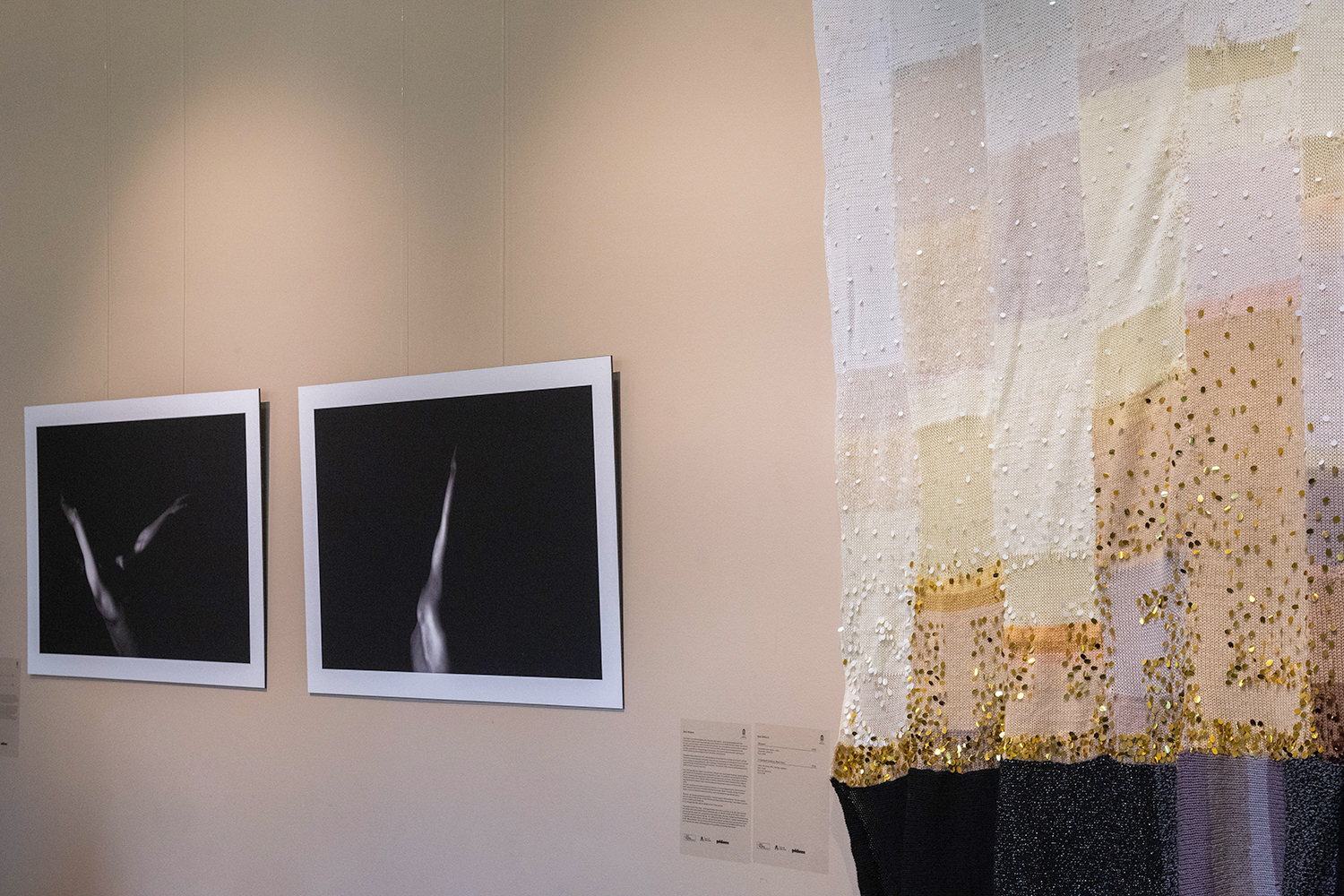
Life lines, installation view, featuring the work of Anna Révész and Sera Waters. Photograph Lana Adams.
Concluding this trilogy is Introspection. Expanding upon the first two exhibitions, this third instalments focus is on ‘the self’. Considering the many facets contributing to who we are and how we view the world. Initially inspired by Harwood Fisher’s theory of the subjective-self (1), self-representational theories such as Uriah Kriege’s (2) and subsequent texts surrounding the field, I started to contemplate about what influences the way we think about ourselves. And, by at large, the way we think others see us. For me this brought up notions of relationships, experiences, histories, sentiments. That when pulled together can shine a light on how these aspects imprint on our lives and change the way we think and experience. This is what Introspection eventually became – looking into the aspects of our lives that contribute to how we view the world and ourselves.
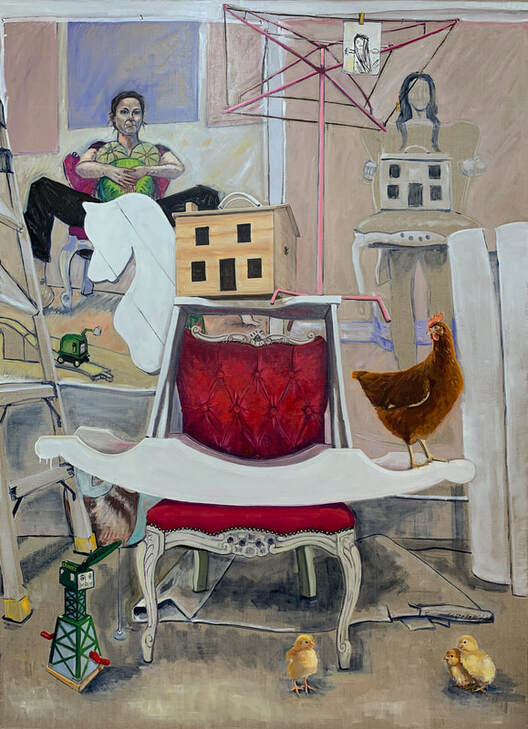
Zoe Freney, Studio Self Portrait. Image courtesy the artist.
Having looked at reactionary and external factors in the past two exhibitions, turning inward was the next logical step in exploring the wider idea of experiencing feelings. With artworks from Barbara Chalk, Zoe Freney, Brad Holland, Simone Kennedy, Kristal Matthews, Caroline Oakley, Kylie O’Loughlin, Deborah Paauwe and Charlotte Tatton Introspection compiled a delicious assortment of reflection and recognition.
During the development stages of Introspection, I noted a number of artworks which cover identity and self-narratives with a focus on faces – literal and symbolic. Picking up on the motif of faces in the Main Foyer, I leant into the cherub faced chandeliers and The Beatles glass artworks visible on the balcony. With so many faces, creating a feeling of unease or of being watched was a concern of mine when developing this concept. However, in selecting pieces that featured portraiture in different ways, that fear was abated.
When talking about ourselves, we curate the information we share. This is represented in the works shown in Introspection, where the collection of works which do spotlight the face are done so selectively, having the face hidden or choosing to show specific features. Or, in the case of Zoe Freney a portrait of her studio. Similarly, artworks by Charlotte Tatton and Kristal Matthews steered away from portraiture, instead focusing on texture and objects. This variety aimed to make the exhibition feel personal, but not invasive.
With some artworks pointing towards childhood memories and reflections on the past and marking the present, Introspection shares some crossover with Memory Bank. A reminder that these overarching themes are linked. Between differing textures, finishes and aesthetics this exhibition provides substantial examples of visual self-articulation.
This trilogy allowed me to look deeply into an idea that’s plagued me for years. And without this opportunity, I never would have had the chance to even explore the idea of creating a trilogy. It was initially an unintentional effort, but once realized it made the entire process easier. The themes explored in this trilogy are varied and expansive and these exhibitions provide but one portion of interpretation. There is so much possibility to build from their core themes and expand into more exhibitions. In the parameters of my position with Guildhouse I was able to establish an open-ended idea to further explore in the future.
Working with such a well versed and passionate team is infectious and helped me develop my skills. Bolstering my confidence in making decisions, to sticking to them and believing them. Making contacts and refining my thought process and approaches to selecting artworks and installing.
Going forward I want to dive into my own creativity again. Explore mediums and activities that can help me express myself. This series of exhibitions has shown me that there isn’t one right way of doing things, and I think it’s time I explore what works for me. Regarding curating, this theme is defiantly one I can see myself returning to investigate again in the future. With such rich ground to cover there is so much to expand upon.
- Harwood Fisher. (2001), The Subjective Self : A Portrait inside Logical Space, Lincoln, United States: University of Nebraska Press
- Uriah Kriege. (2012), Subjective Consciousness: A Self-Representational Theory, Oxford: Oxford University Press
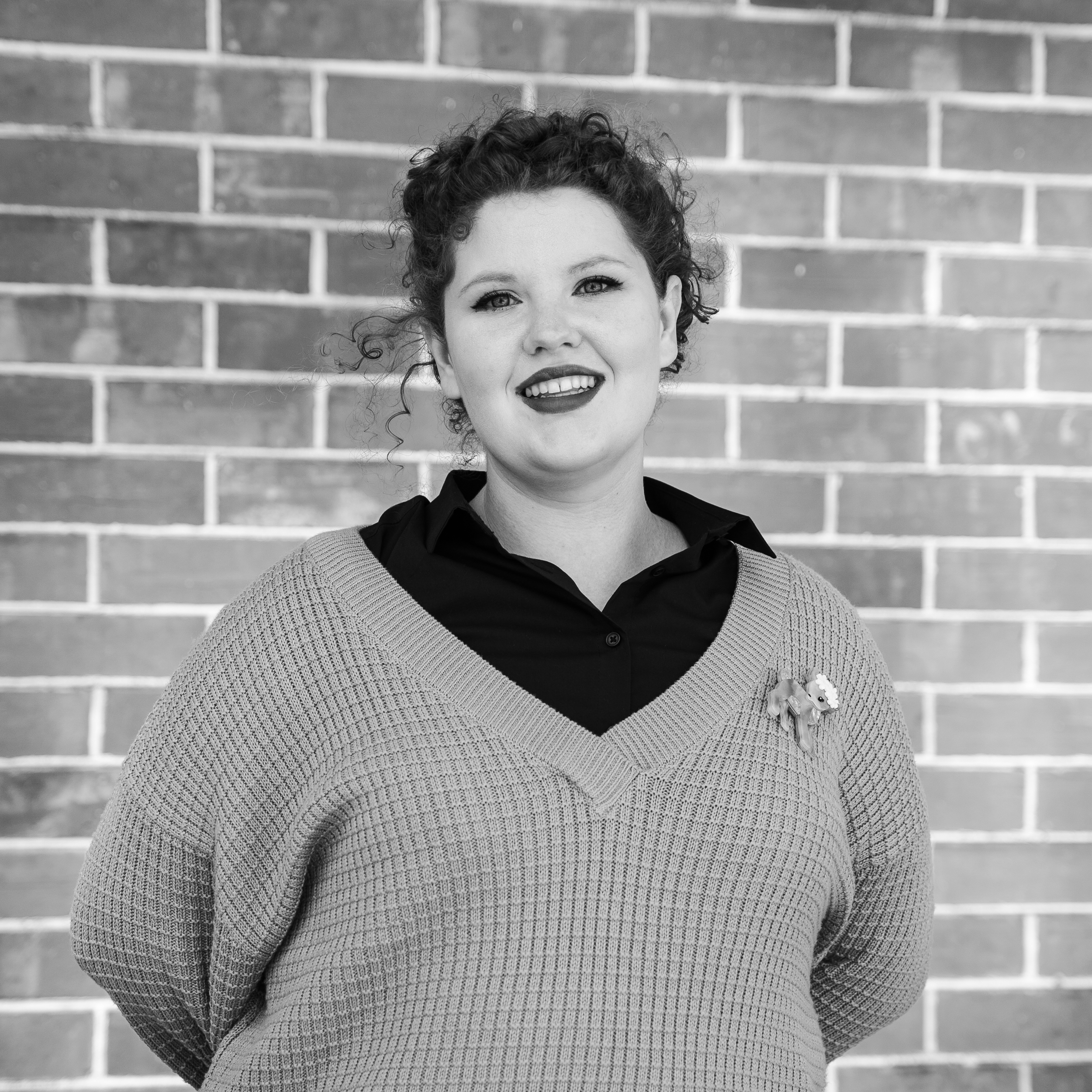
Erin O’Donohue
Erin O’Donohue is an emerging curator working and living in South Australia. Currently in the early phase of her career Erin has curated five exhibitions across the state. Including Neon Revival (2018) supported by the Port Adelaide Artists Forum, 10 years from now… (2020) presented by Flinders University at Victoria Square and Sing my body electric (2021), an exhibition spotlighting the works of SA artist, Annie Forster. The later was the outcome of Erin’s yearlong Curatorial Fellowship with the Centre for Creative Health, presented by the Helpmann Academy. This position included the opportunity to work with CCH’s curatorial team in their galleries in the Royal Adelaide Hospital and the outcome of running her own exhibition. With pride for being the inaugural recipient, this position spurred Erin’s confidence and passion for curation further.
Holding a BA in visual art and English from Flinders University Erin focused her studies on curation and the merging of written and visual art forms. Carrying this fascination through to her honour’s, she studied how image style and placement influences readers belief in graphic memoirs. This now translates into Erin’s curatorial practice, as she prefers to work closely with artists and organisations to best tell the story of their work. Using techniques from comics to communicate with audiences and utilizing space, shapes and distance to emphasize tone and emotion.
Majority of Erin’s experience lies in her time volunteering with Arts in Health and later, her Fellowship curating in Hospital galleries. Having primarily worked in atypical exhibition spaces, Erin continues to challenge herself. Striving to progress her practice and her understanding of what curation can look like.


